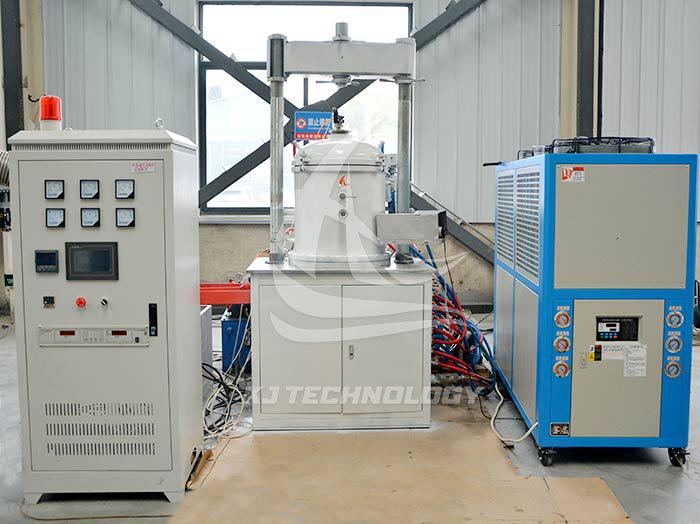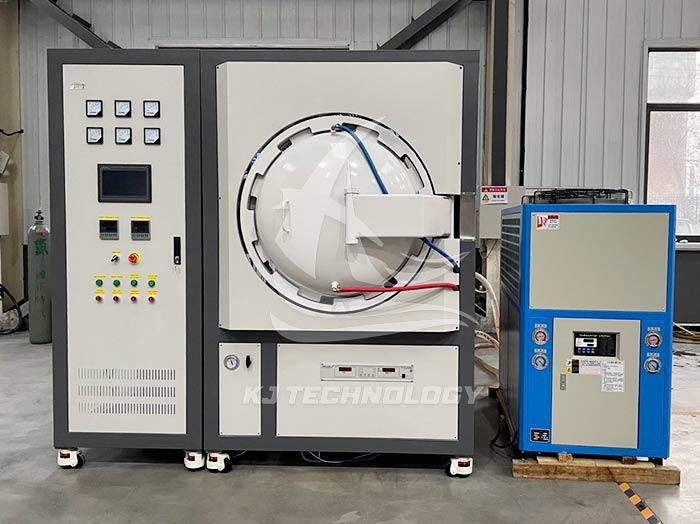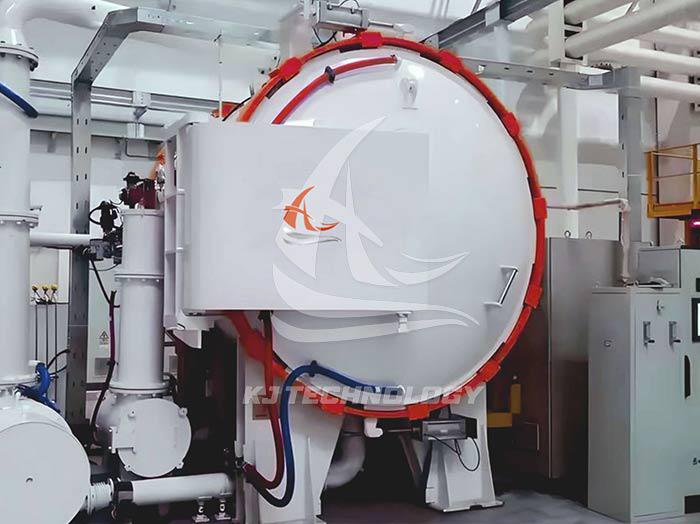Application of High Temperature Vacuum Brazing Furnace in Materials Science
 03-24-2025 Author: KJ technology
03-24-2025 Author: KJ technology
The application of high-temperature vacuum brazing furnace in materials science is mainly reflected in the following aspects:
1. Research on Material Properties
The high-temperature vacuum brazing furnace provides a high-temperature, oxygen free extreme environment for material science researchers to test and analyze the performance changes of materials under high-temperature vacuum conditions. For example, through high-temperature vacuum brazing furnaces, the thermal stability, oxidation resistance, mechanical properties, and other properties of materials such as metals, ceramics, and composite materials can be studied in high-temperature vacuum environments, providing scientific basis for material selection and application.
2. Research on Material Connection Technology
Heterogeneous material connection:
High temperature vacuum brazing furnace is an important tool for connecting dissimilar materials. Due to significant differences in physical properties such as melting points and thermal expansion coefficients among different materials, traditional welding methods are difficult to achieve high-quality connections. High temperature vacuum brazing furnaces can achieve high-quality connections between dissimilar materials such as metal to metal, metal to ceramic, and ceramic to ceramic by selecting appropriate brazing materials and process parameters.
Micro connectivity technology:
With the development of microelectronics, optoelectronics and other fields, the demand for connecting small components is increasing day by day. The high-temperature vacuum brazing furnace can achieve precise connections at the micrometer or even nanometer level, meeting the requirements of high-precision and high reliability connections. For example, in fields such as semiconductor devices and microelectromechanical systems (MEMS), high-temperature vacuum brazing furnaces are widely used in micro connection technologies such as chip packaging and micro sensor connections.
3. Research on Material Modification
High temperature vacuum brazing furnace can also be used for material modification research. For example, through the thermal diffusion effect during high-temperature vacuum brazing, a layer of alloy or compound with special properties can be formed on the surface of the material, improving its wear resistance, corrosion resistance, conductivity, and other properties. In addition, high-temperature vacuum brazing furnaces can also be used for surface treatment of materials, such as removing oxide films, improving surface roughness, etc., to enhance the welding performance and surface quality of materials.
4. Innovative Applications in Materials Science
Preparation of gradient materials:
High temperature vacuum brazing furnace can achieve gradient transition connection of different materials and prepare gradient materials with special properties. For example, through high-temperature vacuum brazing technology, materials with different thermal expansion coefficients can be connected together to prepare gradient materials with gradually changing thermal expansion coefficients, which can be used to solve thermal stress problems.
Research and development of new composite materials:
High temperature vacuum brazing furnaces also play an important role in the research and development of new composite materials. For example, through high-temperature vacuum brazing technology, materials such as metals, ceramics, and polymers can be combined together to prepare new composite materials with excellent mechanical and thermal properties.
5. Advantages of High Temperature Vacuum Brazing Furnace in Materials Science
High precision temperature control:
The high-temperature vacuum brazing furnace has a high-precision temperature control system, which can accurately control the welding temperature and ensure the quality of the welded joints.
Anaerobic environment:
The high-temperature vacuum brazing furnace provides an oxygen free welding environment, avoiding material oxidation and contamination at high temperatures, and improving the performance and reliability of welded joints.
Wide applicability:
The high-temperature vacuum brazing furnace is suitable for welding and connecting various materials, including metals, ceramics, composite materials, etc., providing a broad space for the research of materials science.
In summary, the application of high-temperature vacuum brazing furnaces in materials science is very extensive, involving multiple aspects such as material performance research, material connection technology research, material modification research, and innovative applications. With the continuous development of technology, the application prospects of high-temperature vacuum brazing furnaces in materials science will be even broader.








